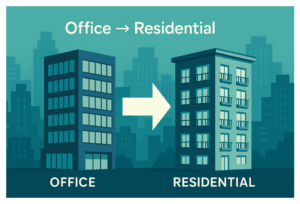Introduction to T12 Real Estate
Defining T12 in Real Estate:
- Begin with a clear definition of T12 or Trailing Twelve Months and its role in real estate financial analysis.
- Discuss how T12 serves as a historical record of a property’s financial performance, including income and expenses.
- Emphasize its utility in providing a snapshot of the property’s operational history to investors, lenders, and appraisers.
- Highlight how T12 allows for the assessment of a property’s financial health and assists in predicting future performance.
The Importance of T12 in Real Estate:
- Detail the significance of T12 in various real estate transactions, such as acquisitions, sales, and refinancing.
- Explain how T12 figures into the due diligence process and the assessment of investment risk.
- Discuss the role of T12 in formulating strategies for property management, improvements, and value-add initiatives.
- Explain how T12 can impact lending decisions and the terms of financing.
T12 vs. Pro Forma Financials:
- Clarify the distinction between T12 and pro forma financials, noting that T12 is based on actual historical data, while pro forma is a projection.
- Discuss why investors might prefer T12 as it’s less speculative and more grounded in the property’s actual performance.
- Explain the role of pro forma financials in estimating the future potential and the planning of property developments or improvements.
- Highlight scenarios where each might be more applicable and how savvy investors use both to get a full picture of a property’s potential.
Illustrating T12 with a Case Study:
- Introduce a case study or example where T12 analysis was crucial in the decision-making process for a real estate investment.
- Provide background information on the property in question, including location, type, and market conditions at the time of analysis.
- Detail the T12 data points that were particularly influential in assessing the property’s value and the investment decision.
- Discuss the outcome of the investment and how T12 data contributed to its success or challenges.
Conclusion of the Introduction:
- Sum up the key points discussed in the introduction, reinforcing the value of understanding T12 in real estate investment.
- Pose a question or a statement that piques the reader’s interest in learning more about how T12 analysis can be applied to their own investment decisions.
- Transition smoothly into the next section of the blog, which would delve deeper into the benefits of T12 analysis.
The Benefits of T12 Analysis in Real Estate
The Trailing Twelve Months (T12) financial report stands as a beacon of accuracy in the real estate industry, offering a realistic snapshot of a property’s financial health. Unlike forward-looking financial projections, the T12 report grounds investors in the reality of a property’s performance, providing a robust basis for making informed decisions.
Accuracy and Realism of T12 Over Projections
T12 financial reports offer a retrospective and precise account of a property’s income and expenses. This historical data is vital for investors seeking a transparent view of a property’s financial viability. Unlike pro forma statements, which are often based on assumptions and projections, T12 reports reflect the actual performance and can highlight discrepancies between past projections and current operations. This tangible evidence of a property’s financial history is indispensable for conducting valuations, assessing risk, and setting realistic expectations for future cash flows.
Revealing Trends in Cash Flow and Operating Costs
By examining the ebb and flow of a property’s finances over the past twelve months, T12 analysis can reveal underlying trends that might not be immediately apparent. Seasonal fluctuations in occupancy rates, variations in maintenance costs, and changes in rental income are just a few of the factors that can be identified through meticulous T12 scrutiny. This insight allows property owners to make proactive adjustments to their operational strategies, such as implementing cost-saving measures or capitalizing on periods of peak demand. For potential investors, understanding these trends is essential for forecasting the future financial performance of the property.
Decision-Making Benefits for Buyers, Sellers, and Refinancers
The implications of T12 analysis extend to all parties involved in real estate transactions. Buyers benefit from T12 reports as they can identify the true earning potential and expenses of a property, leading to more informed bidding and negotiation strategies. Sellers can use T12 data to justify their asking price, providing evidence of the property’s financial performance to prospective buyers. For those looking to refinance, T12 reports serve as a proof of profitability that can be used to secure favorable loan terms. In all cases, T12 analysis supports transparent, data-driven decision-making, minimizing the risk of unexpected financial issues post-transaction.
Understanding the Numbers: T12’s Role in Property Valuation
Accurate property valuation hinges on reliable data, and T12 reports are invaluable in this respect. They provide the raw figures needed to calculate critical investment metrics such as cap rate and cash-on-cash return, which are fundamental to any solid investment analysis.
Impact on Cap Rate and Cash-on-Cash Return
The capitalization rate, or cap rate, is a ratio used to estimate the potential return on an investment property. By dividing a property’s net operating income (NOI) from the T12 by its current market value, investors can gauge the return rate. Similarly, cash-on-cash return measures the cash income earned on the cash invested in a property. T12 financials play a critical role in these calculations, offering a clear picture of the investment’s performance over the past year.
Debt Service Coverage Ratio (DSCR)
The DSCR is another crucial metric derived from T12 data, representing the cash flow available to cover debt payments. It’s calculated by dividing the NOI by the total debt service. Lenders commonly use this ratio to assess a property’s ability to sustain its debt, with T12 data providing the necessary NOI figures.
Comparing T12 Across Property Types and Markets
A T12 analysis is not a one-size-fits-all; it varies significantly across different property types—such as residential, commercial, and industrial—and market segments. Each sector has unique operating costs, income patterns, and market forces that influence the T12 figures and the resulting valuation metrics.
The Limitations of T12 in Real Estate Investing
While T12 reports are an essential tool in real estate valuation, they are not without limitations. Understanding these can help investors and appraisers create a more rounded and forward-looking financial analysis.
Historical Data and Future Performance
T12 reports, by their nature, are backward-looking and may not always be indicative of future performance. Market dynamics, new competition, changes in property management, and economic shifts can all affect future income and expenses, making it crucial to consider these factors alongside the T12 analysis.
The Importance of Due Diligence
Due diligence is paramount when reviewing T12 reports. Potential inaccuracies, whether from data entry errors or misrepresentation, can skew an investment analysis. Investors should verify the T12 data against leases, bank statements, and other financial records for accuracy.
Supplementing T12 Analysis
To mitigate the limitations of T12 reports, investors should supplement them with other research methods, such as market analysis, future cash flow projections, and capital expenditure forecasts. This multi-faceted approach can provide a more comprehensive view of the property’s potential.
Additional Elements to Enhance T12 Analysis
Collecting and Interpreting T12 Data
Gathering and understanding T12 data is a critical step in real estate investment analysis. To collect this data, investors should request comprehensive financial statements from the past twelve months, which include detailed income statements, balance sheets, and cash flow statements. Interpreting this data requires a careful review of each line item, understanding the context of the numbers, such as recognizing non-recurring expenses or income spikes due to seasonal trends. Renew Realty aids investors in this process, ensuring that the collected data paints an accurate picture of a property’s financial performance.
Glossary of T12 Terms
Net Operating Income (NOI): The total income from property operations minus operating expenses.
Capitalization Rate (Cap Rate): A rate that helps in evaluating a real estate investment’s profitability and return potential.
Cash on Cash Return: A metric used to calculate the total cash income earned on the cash invested in a property.
Debt Service Coverage Ratio (DSCR): Measures the cash flow available to cover debt payments.
Vacancy Rate: The percentage of all available units in a rental property that are vacant or unoccupied at a particular time.
Gross Rent Multiplier (GRM): A rough measure of the value of an investment property.
Tips to Avoid Common Pitfalls
When analyzing T12 reports, it’s important to avoid common pitfalls such as overestimating income or underestimating expenses. Renew Realty recommends validating all figures against independent documents, being wary of outdated or estimated numbers, and considering market conditions that may affect future performance. By approaching T12 analysis with a critical eye and consulting with professionals, investors can make well-informed decisions that align with their investment goals.




